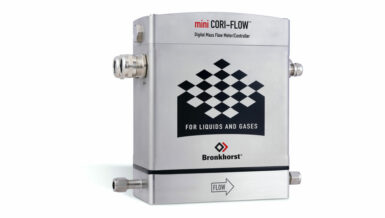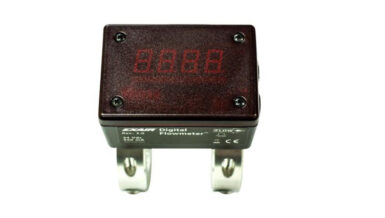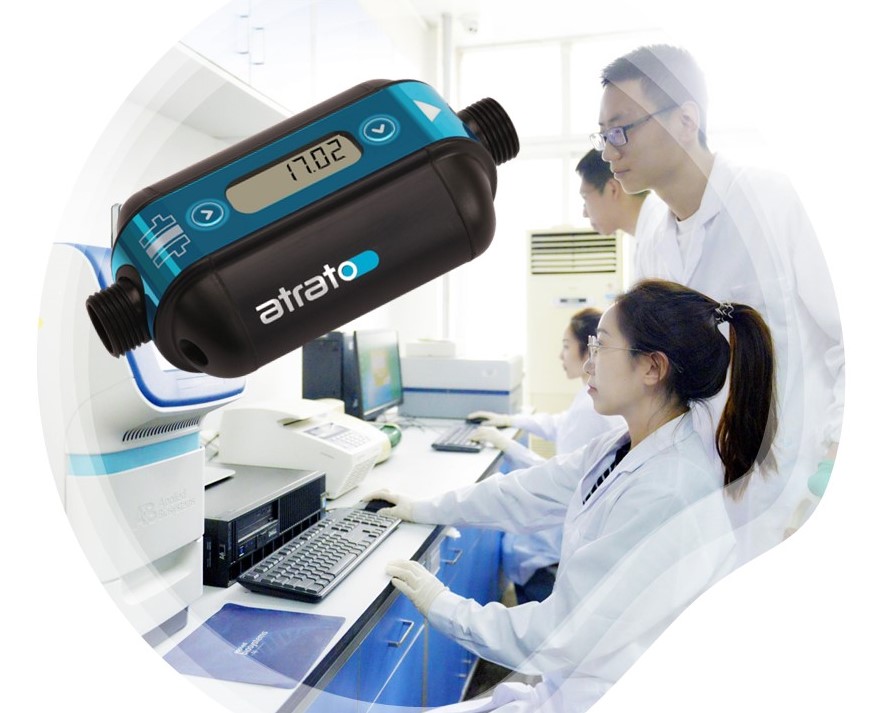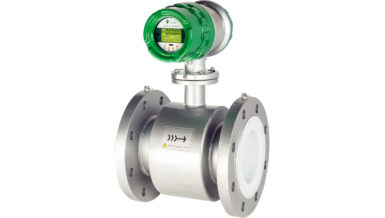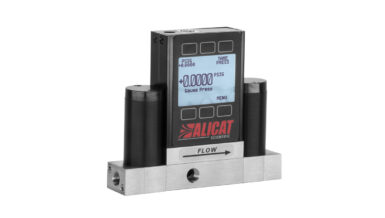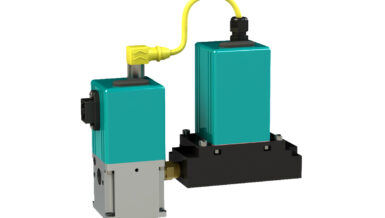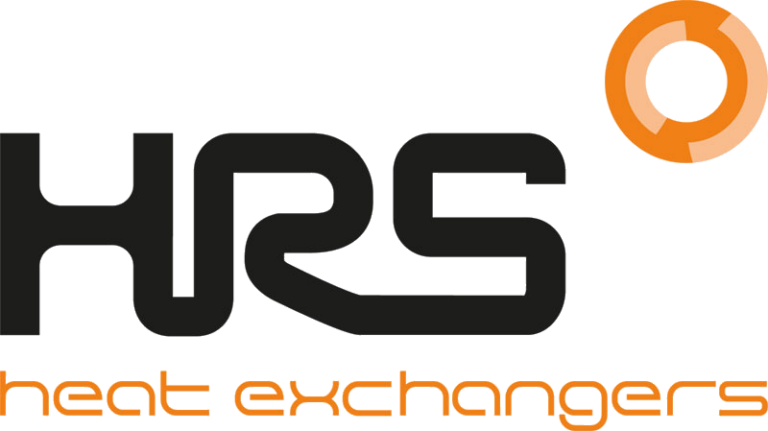Magnetic flow meters will typically not work with hydrocarbons, distilled water, non-aqueous solutions and non-conductive solutions.

Magnetic flow meters utilize Faraday’s Law of Electromagnetic Induction to determine the velocity of a liquid flowing in a pipe. Magnetic flow meters consist of a nonmagnetic flow tube, liner, electrodes and electromagnets to generate a magnetic field. In magnetic flow meters, a magnetic field is generated and channeled into the liquid flowing through the pipe.
Operating according to Faraday’s Law, signal voltage (E) is dependent on the average liquid velocity (V) the magnetic field strength (B) and the length of the conductor (D) which in this instance is the distance between the electrodes.
Faraday’s Formula

E is proportional to V x B x D where:
E = The voltage generated in a conductor
V = The velocity of the conductor
B = The magnetic field strength
D = The length of the conductor
The liquid flowing through the pipe is the conductor, and electromagnetic coils surrounding the flow tube generate the magnetic field. The signal is sensed by the two electrodes embedded on opposite sides of the flow tube. The flow signal at the electrodes is directly proportional to the flow velocity, the intensity of the magnetic field, and distance between electrodes.
Magnetic flow meters do not require much upstream and downstream straight runs so they can be installed in relatively short meter runs.
Advantages of using Electromagnetic Flow Meters
The main advantages of using magmeters is that they feature an obstruction-free design with no moving parts which eliminates flow impediment, requires less maintenance and can be used on very large line sizes. Accuracy over a wide flow range can be as good as ±0.5%.
Mag meters perform extremely well in many municipal and processing applications and is the meter of choice for measuring conductive liquids such as water or slurry. Magmeters also have the advantage of being able to measure both very low flows and very high volume flow rates.
Disadvantages of using Magnetic Flow Meters

Magnetic flowmeters are only effective on conductive fluids, and materials such as unmixed hydrocarbons and gases cannot be measured. However, magnetic materials themselves may also present problems, as hydrodynamic effects can alter the normal flow pattern and disturb the velocity rate enough to interfere with operations. Depending on their size and capacity, magnetic flowmeters can be relatively heavy, and those with higher corrosion and abrasion resistance can be expensive.
Typical Industries Where Magnetic Flow Meters are Used
- Water / Wastewater Industry
- Food and Beverage
- Metals
- Brewing, Distilling, and Wine makening
- HVAC
- Chemical
- Pulp and Paper
- Pharmaceutical
- Mining, Mineral Processing
Magnetic Flow Meter Selection
The key questions which need to be considered before selecting a magnetic flow meter are:
- Is the fluid conductive or water based?
- Is the fluid or slurry abrasive?
- Minimum and maximum flow rate for the flow meter?
- Minimum and maximum process pressure?
- Minimum and maximum process temperature?
- Is the fluid chemically compatible with the flow meter wetted parts?
- What is the size of the pipe?
- Is the pipe always full?
- Do you require an integral display or remote display?
- Do you require an analog output?
Magnetic flow meters require a minimum medium conductivity for the technology to measure flow. This chart provides a general guideline on conductivity of common media.






